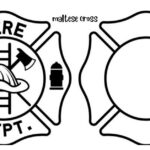Building a successful small buisness jewelry websites is a crucial step for entrepreneurs looking to expand their reach and establish an online presence. In today’s digital age, a well-structured and attractive website can set your jewelry business apart from the competition. Whether you’re just starting or looking to revamp your existing site, there are key factors to keep in mind to ensure your online jewelry store thrives. From the design to the checkout process, each component plays an essential role in driving customer engagement and sales.
Understanding the Importance of a small buisness jewelry websites
In the world of retail, jewelry is one of the most competitive niches. Therefore, having a website is more than just an online catalog; it’s your virtual storefront. A jewelry website allows potential customers to browse your products at their convenience, and with a well-optimized site, you can reach customers worldwide. The online marketplace is growing rapidly, and having a website helps your brand stay relevant in a fast-paced industry.
Choosing the Right Domain Name
The domain name of your jewelry website is crucial for branding and SEO purposes. It should be easy to remember, relevant to your business, and ideally, it should include keywords related to jewelry or your brand. A memorable domain name will help customers find you easily and make a lasting impression. Keep it short, catchy, and reflective of your business to leave a positive first impression.
Investing in a Professional Website Design
First impressions matter, especially online. Your website’s design should reflect the quality of your jewelry. If the design looks outdated or unprofessional, potential customers may assume the same about your products. Investing in a professional web designer or using high-quality templates can ensure your site looks polished and enticing. Clean layouts, eye-catching images, and intuitive navigation are key to keeping users on your site and encouraging them to explore your jewelry collections.
Optimizing for Mobile Users
More and more people shop online using their smartphones. If your jewelry website isn’t optimized for mobile devices, you risk losing a large portion of potential customers. A mobile-responsive design ensures that your website adjusts to different screen sizes without compromising on aesthetics or functionality. The easier it is for mobile users to browse and purchase your products, the higher your sales will likely be.
Creating Compelling Product Descriptions
Product descriptions are your opportunity to sell the story behind each piece of jewelry. Descriptions should go beyond just listing materials and sizes. Talk about the inspiration behind the design, the craftsmanship, and how the piece can be worn for different occasions. A compelling story can increase emotional attachment and motivate customers to make a purchase. Don’t forget to include relevant keywords to help with SEO and ensure your products rank well in search engines.
Using High-Quality Images
When selling jewelry online, customers cannot physically touch or try on the items. That’s why high-quality images are essential for showing the details of your pieces. Include multiple images of each product from different angles to give customers a better idea of the item’s appearance. Close-up shots of intricate designs and materials are particularly effective. The better the images, the more likely customers will feel confident in their purchases.
Integrating Customer Reviews
Customer reviews can make or break an online business. Potential buyers are more likely to trust the opinions of previous customers than a brand’s marketing copy. Integrating reviews into your jewelry website helps build credibility and trust with visitors. Encourage your satisfied customers to leave positive feedback on your products, and be sure to address any negative reviews professionally to maintain a good reputation.
Streamlining the Checkout Process
A complicated or lengthy checkout process can deter customers from completing their purchases. Streamlining the process by offering guest checkout options, multiple payment methods, and a clear, simple design will reduce cart abandonment rates. Ensure that the checkout process is secure, transparent, and user-friendly. A smooth, hassle-free experience encourages repeat business and enhances customer satisfaction.
Incorporating SEO Best Practices
SEO (Search Engine Optimization) is crucial for increasing the visibility of your jewelry website in search engine results. Incorporating relevant keywords into your product descriptions, blog posts, and metadata helps attract organic traffic. Additionally, optimizing image alt tags, improving site speed, and using internal links can improve your website’s search engine ranking. The higher your site appears in search results, the more traffic and sales you will generate.
Building a Blog to Engage Customers
Starting a blog on your jewelry website is an effective way to engage with your audience, showcase your expertise, and improve your SEO efforts. Blog posts can feature styling tips, gift guides, behind-the-scenes stories of your design process, and more. Not only does a blog offer value to your readers, but it also provides opportunities to rank for different keywords, driving more traffic to your site.
Utilizing Social Media Integration
In today’s world, social media is a powerful tool for driving traffic to your website. Integrating social media buttons on your jewelry site makes it easy for visitors to share your products with their followers. Regularly posting on platforms like Instagram and Pinterest, which are visually focused, can help showcase your jewelry designs to a broader audience. Directing social media traffic to your website will increase your chances of making sales.
Offering a Customization Option
Personalization is becoming increasingly popular in the jewelry industry. By offering customers the option to customize their jewelry—whether through engraving, stone selection, or design alterations—you give them a unique shopping experience. Customization not only enhances customer satisfaction but also sets your jewelry business apart from competitors.
Ensuring Security and Trustworthiness
Security is paramount when operating an online business. Customers need to trust that their personal and payment information will be safe when shopping on your jewelry website. Ensure that your site has SSL encryption, which protects sensitive data and signals trustworthiness to your visitors. Displaying trust badges and secure payment methods can further reassure customers and encourage them to complete their purchases.
Providing Excellent Customer Support
Customer support plays a significant role in the success of your jewelry website. Offering multiple channels for support, such as live chat, email, or phone, allows customers to get help quickly. Fast, friendly, and knowledgeable customer service can lead to higher satisfaction rates and increase the likelihood of repeat customers. Make sure your contact information is easily accessible on every page of your site.
Encouraging Email Sign-Ups for Retargeting
Email marketing is a powerful tool for keeping customers engaged with your brand. Encourage visitors to sign up for your email list by offering exclusive promotions or discounts. You can then use targeted email campaigns to re-engage customers who haven’t made a purchase in a while or notify them of new collections. Personalized emails help build a long-term relationship with your customers, ultimately boosting sales.
Conclusion
Building a successful small business jewelry website requires careful attention to design, functionality, and customer experience. From creating compelling product descriptions to optimizing for mobile users, each aspect contributes to the overall success of your online store. By focusing on SEO, offering excellent customer service, and integrating social media, you can set your business up for long-term growth. Investing time and effort into these strategies will help you create a user-friendly and profitable jewelry website.
FAQs
What is the best platform to build a jewelry website?
Platforms like Shopify, WordPress, and Wix are great for building e-commerce jewelry sites.
How important are images on a jewelry website?
High-quality images are essential as they allow customers to visualize the products in detail before buying.
Can I sell custom jewelry on my website?
Yes, offering customization can attract more customers looking for unique, personalized pieces.
How do I drive traffic to my jewelry website?
SEO optimization, social media marketing, and email campaigns are effective ways to increase traffic.
Is a blog necessary for a jewelry website?
A blog can help improve SEO and engage customers with relevant content, driving more traffic and sales.











